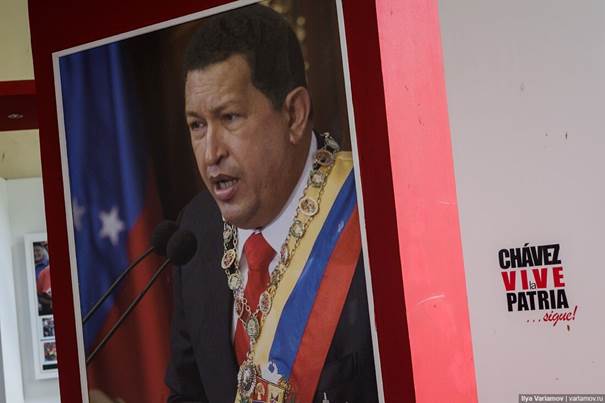Cuba: Communist Occupation
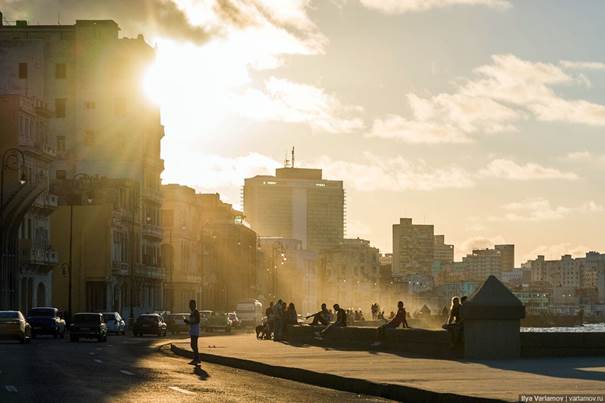
The impression of Cuba is twofold. On the one hand, it is very beautiful and interesting here. On the other hand, all this beauty comes at the expense of the suffering of millions of people. Cuba is an impoverished, backward country that exists for the amusement of well-fed tourists. People arrive, arrive on cruise ships, take pictures of locals and leave satisfied. And the locals live in poverty and lawlessness.
Castro has ruined his own country and reduced what was once the richest region to the status of the poorest African countries. In 2016, it was still necessary to get medicines and food here. There was no normal mobile communication and Internet. People worked for pennies, and the only happiness was to steal something. Remember? “What I guard, I have.” It’s about Cuba! Everyone stole. Even road workers took temporary signs with them on weekends: everything that didn’t lie well would be dragged away.
The delight of what he saw was overshadowed by the horror of what was happening. It seems that he was about to be executed in public. The crowd watches with curiosity as the victim is tortured.
For a long time, Cuba existed in spite of the United States. It was pulled by the USSR. Unfortunately, the Soviet Union did not limit itself to the occupation of Russia, it spread many metastases around the world, sponsoring various cannibalistic regimes. Before the revolution, during Batista’s rule, there were about 500 political prisoners in Cuba, while under Castro there were 100,000, according to American studies. Castro himself admitted in 1965 that there were 20,000 political prisoners. After 1991, when the massive infusion of Soviet money into Cuba stopped, the Island of Liberty turned into an ordinary Third World country.
“Oh, what nice old American cars!” Yes, only an ordinary Cuban cannot buy a car. Foreign cars are imported only for state needs.
“Oh, what beautiful houses”! Yes, but almost everywhere there are rotten communal apartments. Just as in the 1960s, Fidel nationalized hotels and all foreign real estate, gave Cubans a room each, and still has been living there for generations of 5-7 people per room. Please note that in Cuba you will see almost no new buildings. Housing is not being built here. Under the Soviet Union, Khrushchev buildings were made, where locals were settled. But with the collapse of the Soviet Union, Soviet houses also fell apart.
The average salary in the country in 2016 was about 50 euros. Pension – 10-20 euros. The largest pension belongs to the military, $50. If you don’t have relatives abroad who send you money, all you have to do is lie down and die. Fortunately for Cubans, many families have relatives in the United States.
In the past, there was such a thing as political information, and all citizens were told which party was good (Communist, of course). Perhaps it is still relevant now. In schools and state-owned enterprises, the day begins with an anthem and a story about how the whole world is rotting and Cuba is prospering. Political information is mandatory for guides and all people who work with foreigners: meetings are held several times a month. So that no one speaks ill of the revolution and the Communist Party, snitches are scurrying everywhere. Cubans are taught to knock from kindergarten. Children are also taught to speak quietly, “so that the neighbors do not hear.”
If you suddenly think that Cuba is a paradise, then think about why people still flee from the Island of Liberty in the United States, risking their lives by crossing the strait on rafts and boats. They are fleeing like refugees from war. The U.S. Coast Guard catches 500 people a month. Add to this those who have not been caught up and who are dissolving among their relatives in America.
Leave legally? Not so simple. Cuba has an exit visa. It costs 150 euros, that is, this is the salary of a Cuban for 3 months (2016 rates). Moreover, the authorities can refuse to issue a visa if they consider you an “unreliable citizen”.
A poor unfortunate country that exists for the amusement of tourists…
U.S. sanctions against Cuba are called “the longest genocide in history.” It sounds very “convincing”, especially if you think about the working methods of the Cuban Communists.
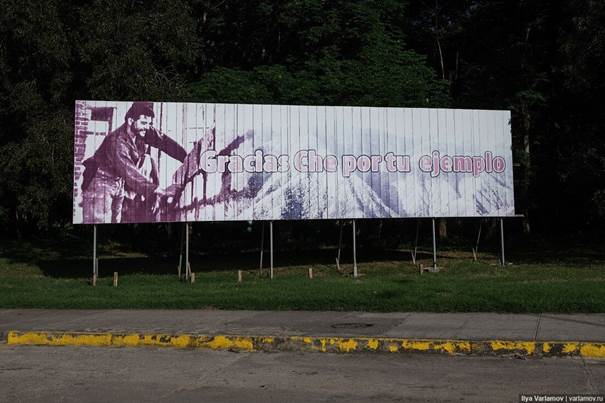
A little bit about Fidel’s regime from the “Black Book of Communism”:
The Military Production Support Unit (UMAP), which operated from 1964 to 1967, was the first to master the experience of organizing corrective labor. In November 1965, the UMAP facilities were veritable concentration camps, where religious figures (Catholics, including the current Archbishop of Havana, Monsignor Jaime Ortega; Protestants, Jehovah’s Witnesses), pimps, homosexuals, and all sorts of “potentially dangerous to society” elements were held intermingled. Prisoners built their own barracks, particularly in the province of Camagüey. “Socially dangerous persons” were subjected to military discipline, which gradually developed into ill-treatment, malnutrition and isolation. In order to escape from this hell, the prisoners sometimes injured themselves. Some were released from prison with mental disorders. One of the main functions of UMAP was to “re-educate” homosexuals. Even before the creation of this punitive body, many of them had lost their jobs, most often in the field of culture; The University of Havana became the scene of anti-gay purges, and it was the order of the day to hold trials of homosexuals, both in public and at work. They were forced to admit their “vices” and renounce them, otherwise they would face dismissal and imprisonment.
“A true example of brotherhood” (Hugo Chávez on the right, if anything).
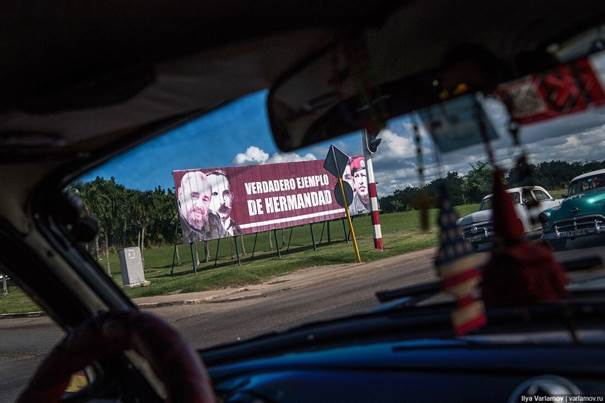
The brutality of the penitentiary system affected not only criminals, but also political ones. First of all, this was reflected in the interrogations carried out by the DTI (Departamento Técnico de Investigaciones), the unit responsible for conducting the investigation. DTI used methods of isolation and influencing the psyche of prisoners: for example, one woman was terribly afraid of insects – she was locked in a cell infested with cockroaches. DTI also used physical methods of pressure: prisoners were forced to climb stairs in lead-filled shoes and then pushed down the steps. Physical abuse was combined with mental abuse, with the use of psychotropic drugs: prisoners were forced to take thiopental and other sleeping pills without being allowed to sleep. In the Masora hospital, electric shocks were carried out exclusively for punitive purposes, without any restrictions. The jailers let down guard dogs, creating the appearance of imminent reprisals; water and electricity were cut off in punishment cells; Prolonged solitary confinement was used to disintegrate the prisoner’s personality.
In Cuba, responsibility was considered collective, and so was punishment. According to this policy, another means of pressure was used: the prisoner’s relatives were subjected to social persecution for the political views of their relative; The children were not admitted to the university, and the spouses were kicked out of work.
Thanks to Comrade Fidel for “world tourism, health and safety” (in August 2016, Fidel Castro turned 90 years old).
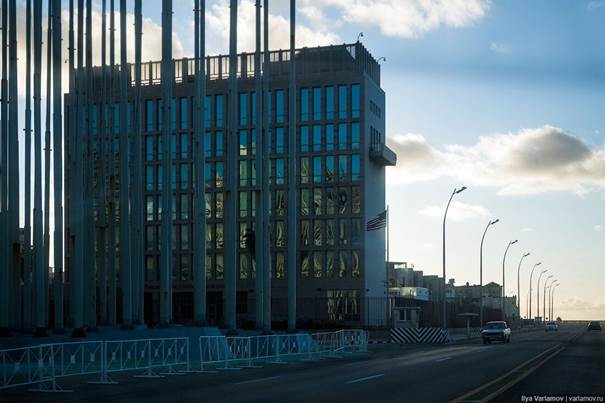
The most notorious was the Cabana prison, where Sori Marín and Carreras were executed. Even in 1982, about a hundred prisoners were shot here. The wild boar “specialized” in cramped punishment cells, nicknamed ratoneras (rat holes). This prison was closed in 1985. However, the massacres did not end, they continued in Colombia, in Boniato, a prison for especially dangerous criminals with unprecedentedly cruel conditions of detention, where dozens of political prisoners died of starvation. Out of fear of being raped by criminals, some political prisoners smeared themselves with excrement. Until today, Boniato, famous for its lattice chambers, the tapiadas, has remained a prison for death row inmates, both political and criminal. Dozens of prisoners died there due to lack of medical care. Testimonies of the unusually harsh conditions in this prison were left by the poets Jorge Valls, sentenced to 7340 days in prison, and Ernesto Díaz Rodríguez, as well as Comandante Eloy Gutiérrez Menoyo.
“Thank you, Che, for your example!”

Cubans had no illusions about communism. But America was very much loved, and special hopes were pinned on the rule of Barack Obama. The entire new Havana was built by the Americans from 1930 to 1959, when Cuba was essentially a dependent territory of the United States. And in people’s minds, that time is marked as an era of prosperity.

The American flag is everywhere, people are happy to buy Stars and Stripes jerseys.

Pioneers in red ties, Octobrists in blue. They say that young people don’t knock as much as the older generation.
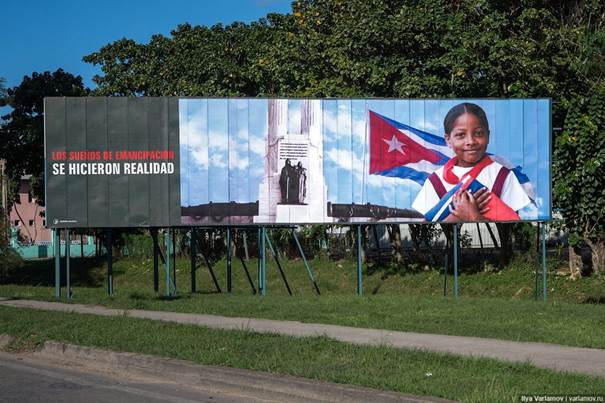
The U.S. Embassy, which was inaugurated in August 2015 after a 55-year hiatus. The U.S. flag was raised by the same three Marines who lowered it in 1961 after breaking off diplomatic relations with Cuba.

On the streets and along the roads, almost all advertising was political. “Dreams of emancipation have become a reality.”

Obama was driving down this street. By the time he arrived, the street had been painted in bright colors, but a few months after his visit, the paint peeled off. Locals say that it was diluted with something. On the other hand, a lot of good paint 😉 immediately appeared on the black market. It’s a common thing, you’ve been through it all yourself. At the same time, the word “stolen” is not liked by the Cubans. Instead, they use other phrases: “solved his problem”, in extreme cases – “endured”. For the same reason, it is not recommended to eat in state restaurants. The best products are more likely to be “taken out” for the family or resold.
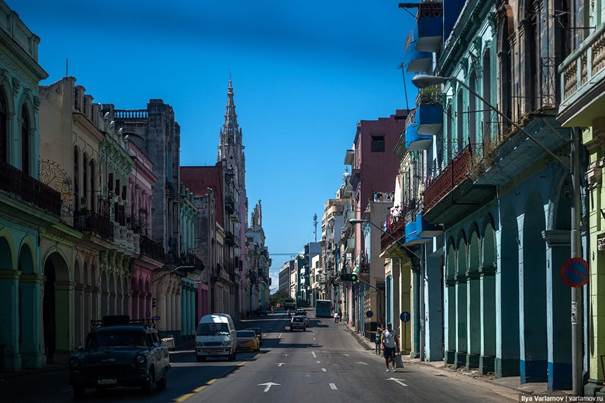
I don’t know exactly how to translate. It seems to be something like a wish to die at this beautiful time (that is, during the era of Fidel’s rule, of course).
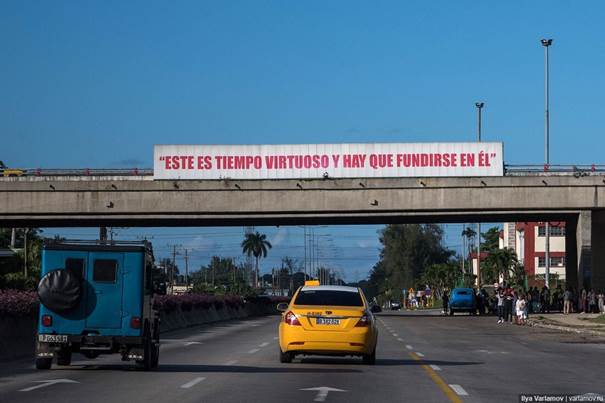
Since there was no normal mobile communication, many people used automatic machines. In Cuba, you can only buy one SIM card per person. If a Cuban gets a mobile phone, he goes to an agency, where they put a SIM card and give him a number. In 2016, SIM cards were not sold to tourists at all. You can only rent a phone along with a SIM card.
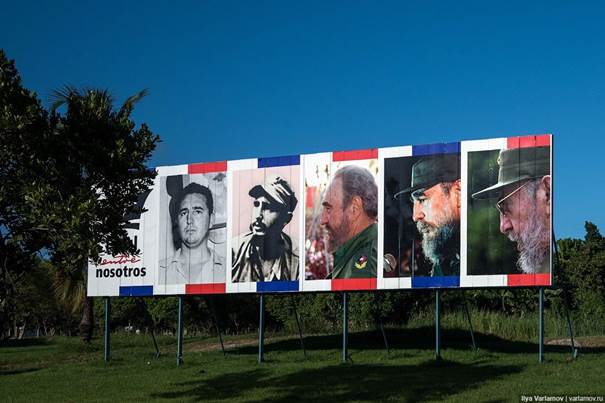
Fidel is among us!

Cuba is considered to be a very safe country. Especially compared to Venezuela. Cubans who are invited to work in Venezuela (doctors, for example) try to get away with it: many think that they will be killed there. And Cuba is very calm. Here you can walk the streets all night and no one will touch you.
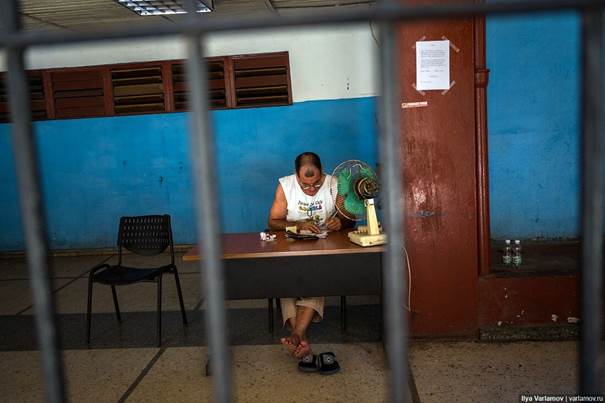
“The party represents and guarantees the unity of the Cuban nation”
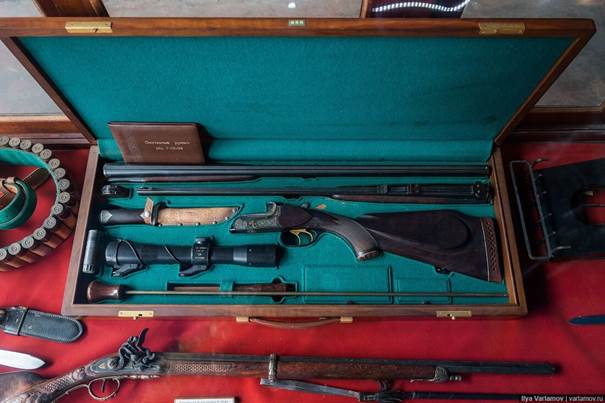
There are two currencies in the country at once: the peso can be convertible and non-convertible. Therefore, in all tourist shops and restaurants, they usually put two prices at once. The convertible peso, of course, is more expensive. Its exchange rate is pegged to the U.S. dollar, and it is essentially a replacement for the U.S. currency for the domestic market.
Do you remember that at one time prices in Moscow and St. Petersburg were indicated in “conventional units”? This is about the same thing, only if they began to issue a ruble equal to the dollar.
Salaries are paid only in non-convertible pesos (CUP). At the first opportunity, Cubans go to the exchange office and exchange them for convertible (CUC).

This gun was given to Fidel by Gorbachev during his visit to Cuba in 1989, but Castro immediately handed it over to a museum and accused Gorbachev of betraying the interests of the revolution. The Cuban leader was sure that Gorbachev was closer to the values of capitalist society, which, however, did not prevent the parties from signing a treaty of eternal friendship. The eternal friendship ended in 1991 with the collapse of the USSR and the cessation of Soviet oil supplies. At the same time, Havana turned to face China.

Rain
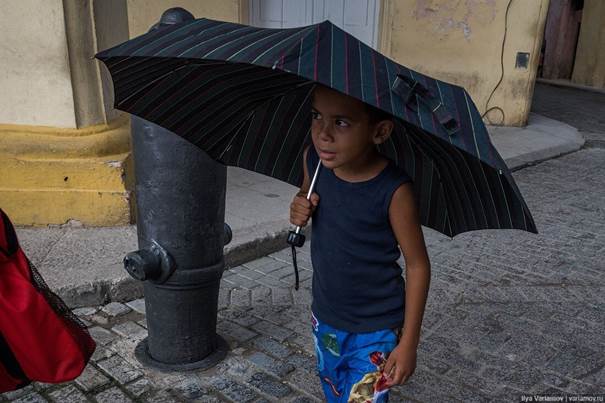
All the most beautiful things that Cuba has appeared before Fidel.

Capitol. Very similar to the one in Washington. By the way, under the dome of the building there used to be a diamond of Nicholas II, which marked the point of the “zero kilometer”. Then it was replaced with a copy.
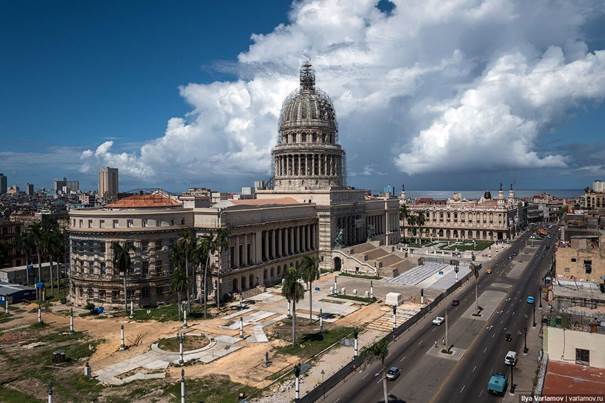
The Capitol is being restored by a German company.
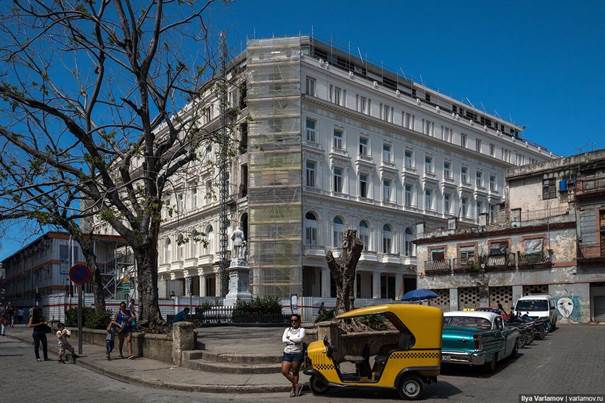

A blue stripe with the inscription “Cuba” on the license plate means that the car is state-owned. The letter T is imported for tourist purposes. Foreign diplomats and businessmen have the right to bring their car with them. But when they finish their business in Cuba, they can’t sell it.

Previously, there were two ways out: either take the car back with you, or donate it to the state. It is often unprofitable to export, because you have to pay for transportation. In addition, in Europe, taxes on old cars are too high, and someone bans the import of used cars altogether. So the cars imported into Cuba often went to the state.
The state then distributed these cars among party members, maybe reward someone with a car, or give them to some travel agency (which is also state-owned).
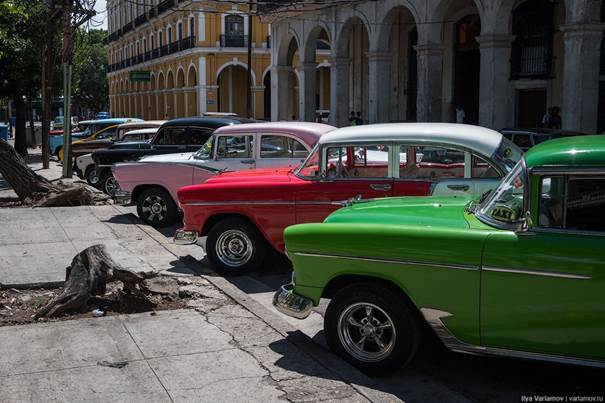
Nine years ago, the Cuban authorities officially announced the free sale of cars, but in fact it did not work. In the domestic market, cars are insanely expensive due to a bunch of import duties, and abroad a Cuban had no right to buy a car: it would not be cleared by customs. By the way, only the bodies of the old American cars remained. The engines have long been changed to more economical ones.

“Slaves used to be brought by the Spaniards to work for them, but now slaves are all of us,” the Cubans joke.
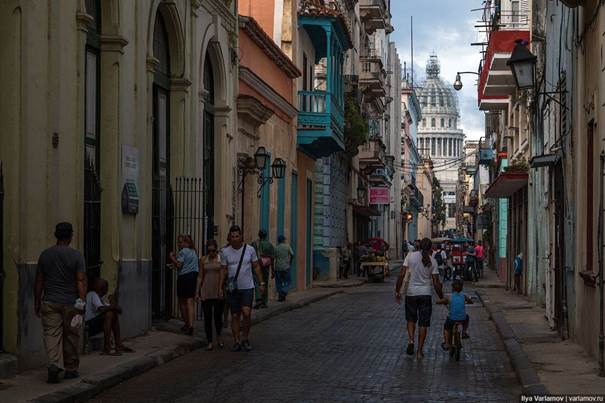
The police have giant flashing lights.
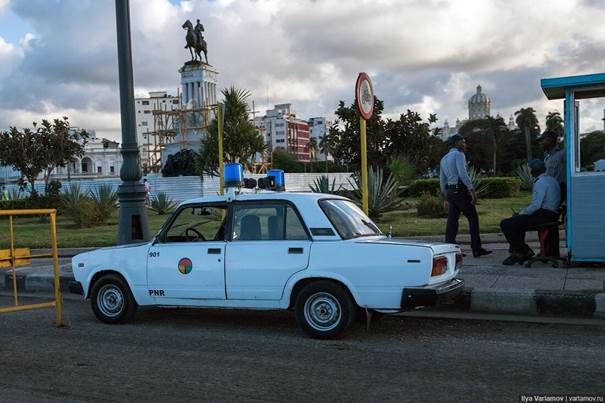
There is even a bicycle police in Havana) Cool.
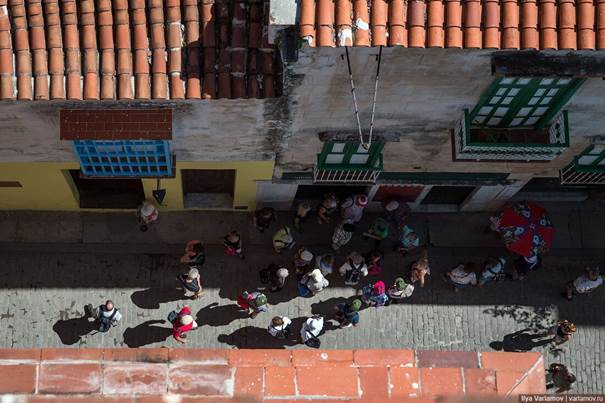
Have I ever seen people with money in Cuba? Of course! These are family members of the leaders of the Communist Party. Their children can easily drive expensive cars. Various officials and generals control underground casinos and brothels.
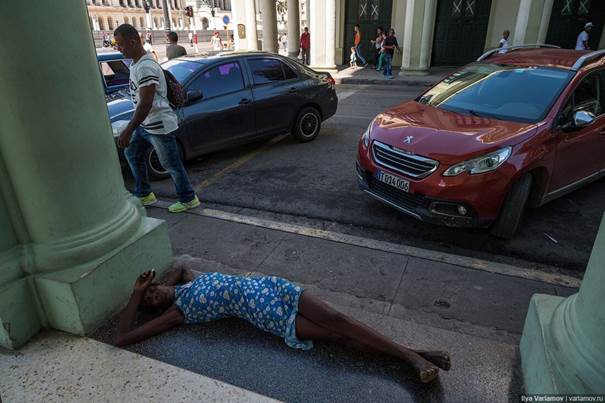
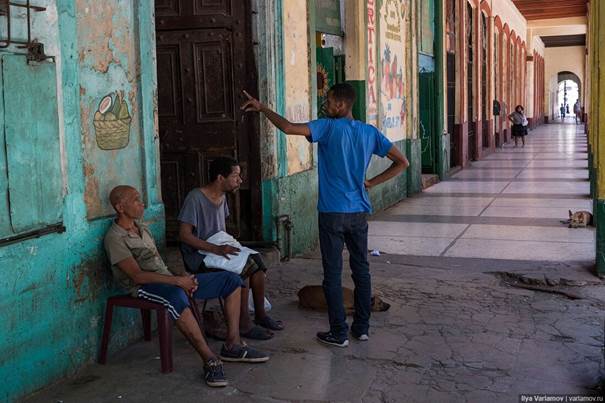
Nice.
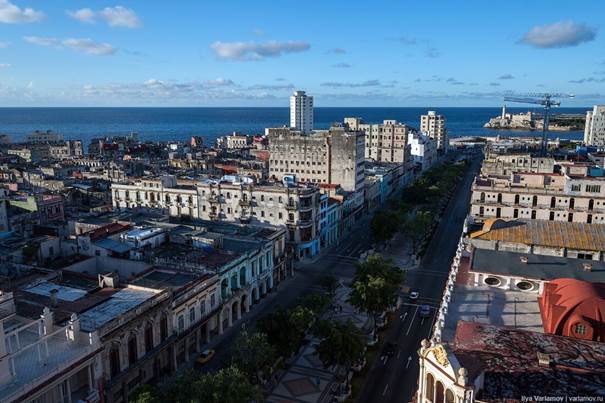
I went into the synagogue.
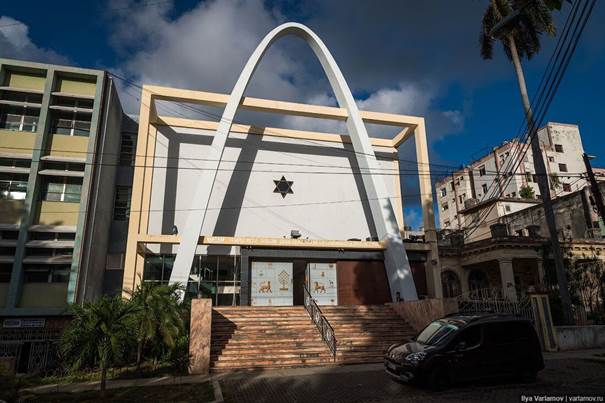

There are many old hotels in the center. Each one is like a small museum. Very beautiful buildings.

Restaurant at the Sevilla Hotel. It was once owned by Corsican-Uruguayan mafia boss Amletto Battisti, who also ran a casino in Havana and ran racketeering. Santo Trafficante Jr., a mafioso from Florida, also had his share. He was one of those who, by agreement with the CIA, participated in the assassination attempts on Fidel Castro.
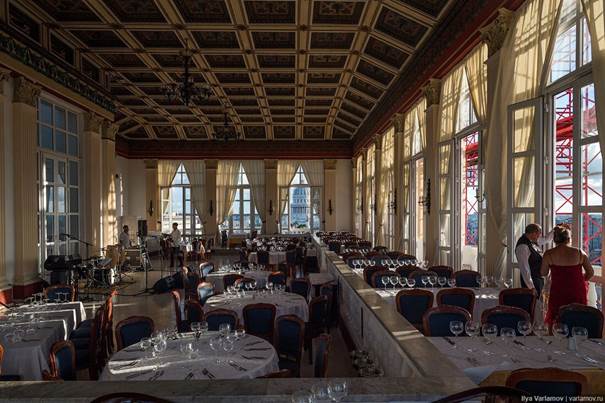
Views

36.
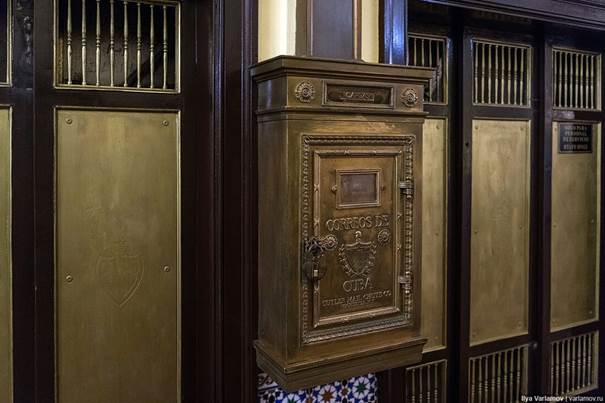
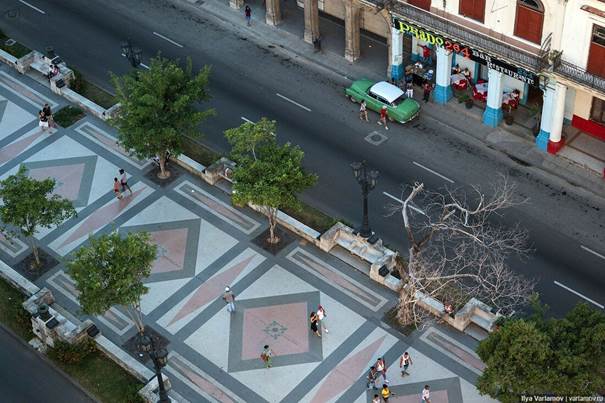
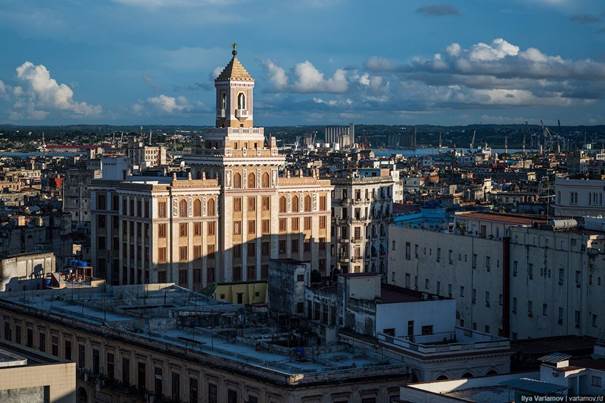
And this is the view from the restaurant in the Capri Hotel. Another place where local mafiosi sat (the name in honor of the Italian island was taken for a reason). It was also owned by Santo Trafficante Jr. The hotel, by the way, can be seen in the series “TASS is authorized to declare…”.
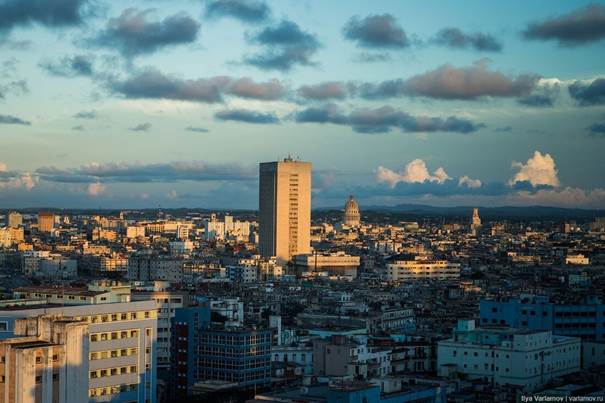
This, in fact, is “National”) I told you about it.

The Ambos Mundos Hotel has a room where Hemingway worked, now a small museum.

The El Floridita bar, where he liked to sit, is always full of tourists.
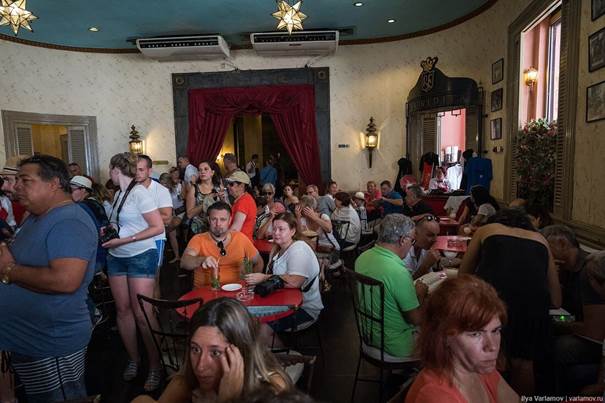
Old Havana


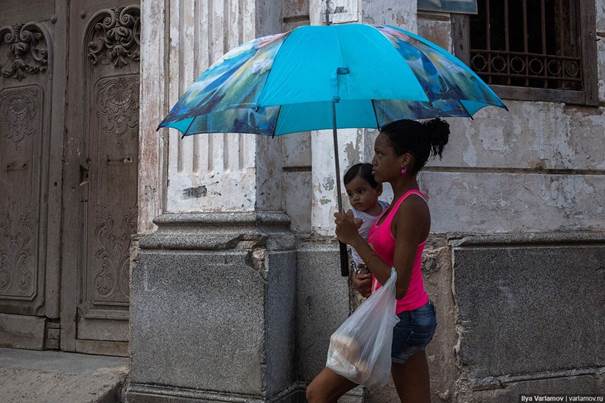
Beautiful Old Box

Mailbox in the hotel. There is a letter wire from above to it! Letters could be thrown from all floors 😉

A priest protects a boy… In light of the pedophilia scandals in the Catholic Church, it looks strange.
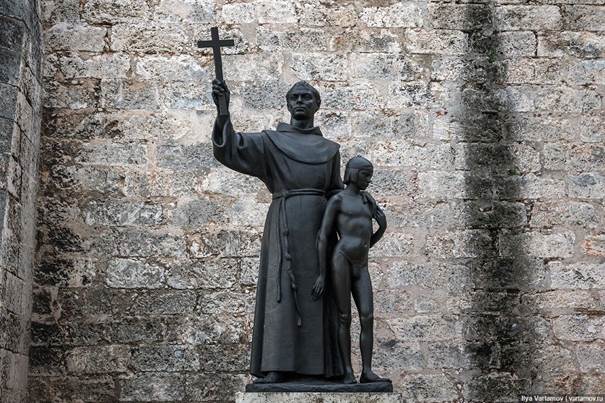
Friendship forever!
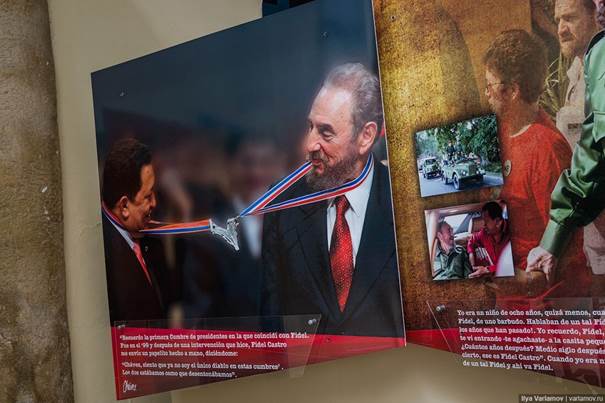
On November 25, 2016, Fidel Castro died after a long illness. He was 91 years old. The chair of the Supreme Commander-in-Chief was taken by his brother Raoul.
